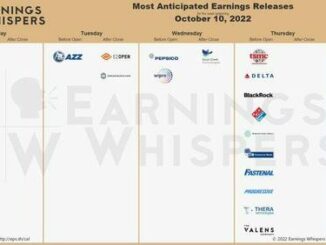
Treasury QT will naturally slow in June 2025 when the Fed runs out of T-bills. Fed governors have teased us with interesting options.
By Wolf Richter for WOLF STREET.
The Fed has started laying out some basic principles about how QT might evolve in the future. So far, the Fed’s QT has shed $1.43 trillion in assets, including 1.14 trillion in Treasury securities. So it’s time to look at how the Fed’s Treasury holdings will mature over the next few years, because that determines the maximum possible pace of the QT roll-off since the Fed does not sell them outright.
As the pile of Treasury securities on its balance sheet shrinks – currently down to $4.63 trillion – fewer securities will mature each month. We can see where this is going because the New York Fed posts the Fed’s portfolio of securities online, including purchase price, CUSIP numbers, and maturity dates.
The current QT Plan. When it designed its QT plan in 2022, the Fed capped the maximum Treasury roll-off at $60 billion per month. Here is the visual depiction of the amounts in Treasury notes and bonds that will mature every month going forward (red columns), the $60-billion cap (green horizontal line), and the use of T-bills to get to the $60 billion cap until the Fed runs out of T-bills (blue bars), based on the current QT plan.
Making up the shortage to the $60-billion cap. When fewer than $60 billion in Treasury notes (2 to 10 years) and bonds (20 and 30 years) mature in one month, the Fed makes up the difference by letting some of its Treasury bills (1-12 months) roll off to get to the $60 billion cap.
For example, this month, $45 billion in notes and bonds will mature (first red column in the chart above), which is below the $60-billion cap (green line), and the Fed will let about $15 billion in T-bills roll off (first blue column) to bring the total roll-off to $60 billion.
In April, about $60 billion in notes and bonds mature and roll off. The Fed will not use any T-bills because the roll-off is already at the cap.
In May, $90 billion in notes and bonds mature. The Fed will let $60 billion roll off, and it will replace the other $30 billion that matured with new securities that it buys at auction. It will not use any T-bills.
QT will naturally slow in June 2025 because the Fed will run out of T-bills, as indicated in the chart above, and it will have no more T-bills to fill the gap to the cap, and the amounts of maturing notes and bonds left in the declining pile also decline.
The Fed has $209 billion in T-bills left, down from $326 billion at the beginning of QT in June 2022. It used $117 billion of T-bills so far to make up the shortages in months when fewer than $60 billion in notes and bonds matured. We discussed the details here last week, under the subheading, “How Treasury bills fit into QT.”
The first months when the Treasury roll-off will be substantially below the cap will be June 2025 ($48 billion maturing), which is the month the Fed runs out of T-bills, and July 2025 ($33 billion maturing).
August 2025 ($71 billion maturing) is the last month when the Treasury maturities exceed $60 billion, as we saw in the chart above.
After August 2025, maturities will be below $60 billion every month, and over time, they’re shrinking further as the pile of Treasuries shrinks.
H2 2025: maturities average $36 billion per month.
H1 2026: maturities average $41 billion per month.
H2 2026: maturities average $33 billion per month.
H1 2027: maturities average $30 billion per month.
H2 2027: maturities average $26 billion per month.
Only 6 months left with maturities over the cap. When more than $60 billion in notes and bonds mature in a month, the Fed lets $60 billion “roll off,” and replaces the overage by buying notes and bonds at auction in the amount of the overage.
As the chart above shows, there are only six months left going forward when this occurs (amount of overage):
May 2024 ($30 billion)
Aug 2024 ($5 billion)
Nov 2024 ($9 billion)
Feb 2025 ($23 billion)
May 2025 ($16 billion)
Aug 2025 ($11 billion).
The future plan for QT and the balance sheet.
Fed governors Christopher Waller and Lorie Logan have come out to tease us with some ideas when and how the pace of QT might slow to avoid an “accident” that would stop QT prematurely. A QT accident occurred in late 2019 when the repo market blew out. The Fed has two tools to avoid a QT “accident”:
In July 2021, before QT was even announced, the Fed already implemented the first tool by reviving the Standing Repo Facility, which it had always had until it killed it in 2009 amid QE.
The second tool will be to slow down the pace of QT. Details will be forthcoming sometime in the future.
So as we see, the pace of Treasury QT will naturally slow down, starting in June 2025. If the Fed lowers the cap before then, the slowdown would begin earlier.
Waller laid out the idea of replacing maturing longer-term Treasury securities with T-bills because the Fed used to hold a much larger share of T-bills compared to the rest of its balance sheet. Starting in 2009, the balance sheet has veered into the opposite direction. Currently, the Fed holds only $209 billion in T-bills but $4.63 trillion in Treasury notes and bonds. Waller said he would like to see the share of T-bills start reverting toward a normal level, which would lead to a much a much faster roll-off of notes and bonds.
Under a new QT plan, the Fed could start this process during QT, replacing the overage in notes and bonds over the cap with T-bills. The cap is now $60 billion, but under a new plan, the Fed might reduce it, maybe to $30 billion. And then there would be more months with overages, and those overages of notes and bonds could be replaced with T-bills. So we’re eagerly awaiting more details on this idea.
Waller also said that he would like to see MBS go to zero on the balance sheet, so let them run off even after QT ends and replace them with Treasuries – which is what the Fed did from the end of QT-1 in the summer of 2019 until March 2020. The likely replacement would be T-bills given the urge to get the share of T-bills back up toward where it used to be before 2008. We can’t wait to see the details.



